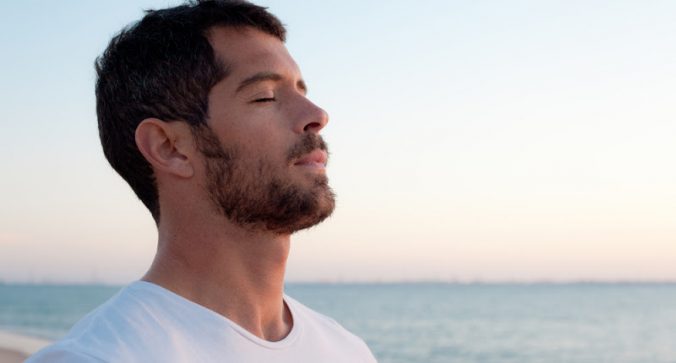When it comes to relaxation strategies, the easier the better! If you can find five minutes of your day for yourself, you can easily slip in a simple relaxation strategy.
Here are some easy ways to help relax:
Breathe it out. Breathing exercises are one of the simplest relaxation strategies, and can effectively calm your stressed-out body and mind anywhere at any time. Sit or lay down in a quiet and safe place such as on your bed or the floor in your home and put one of your hands on your belly. Breathe in to a slow count of three, and then breathe out to the same slow count of three. Feel your belly rise and fall as you breathe in and out. Repeat five times, or as long as you need to feel relaxed.
Release physical tension. When we feel mentally stressed, we often feel physically stressed as well. Releasing any physical tension can help relieve stress in your body and mind. Lay on a soft surface, such as your bed, a carpet, or a yoga mat. Tense up one part of your body at a time, and then slowly release your muscles. As you do this, notice how your body sensations change. Many people start either with the muscles in their face or those their toes, and then work their way through the muscles across their bodies to the opposite end.
Write down your thoughts. Getting things off your mind by writing them down may help you relax. When you feel stressed, take a few minutes to write down some short notes about how you’re feeling or how your day is going. You might do this in a notebook or in a notes app on your smartphone. Don’t worry about being poetic or spelling everything correctly. Just focus on expressing yourself to help release some of your stress.
Make a list. Making a list about what you’re grateful for can help some people feel relaxed. Experts say that when we’re stressed, we tend to focus on the negative parts of life rather than the positive. Thinking about the positive parts of your life and writing them down may help you chill out. Try to think of three good things that happened to you today and write them down, even if they’re small things like getting to work on time or eating a delicious lunch.
Visualize your calm. Have you ever heard the expression “find your happy place”? Sit in a quiet and safe place, such as your bedroom, and begin to think about a place in the world where you feel most calm.
Close your eyes and imagine all the details linked to that place:
the sights, sounds, smells, tastes, and tactile feelings. For example, if you think of the beach, you might imagine calm waves, the sound of children playing in the sand, the smell of sunscreen, the taste of cool ice cream and the feel of gritty sand under your feet.
The more you get into your visualization, the more you can relax.
Benefits of relaxing
There are many benefits to keeping your brain and body relaxed. Relaxation balances out the negative mental and physical effects of stress that we all experience every day.
POSITIVE EFFECTS OF RELAXATION
the ability to think more clearly and make better decisions
the power to better resist future stressors
a more positive outlook on life and your experiences
a healthier body, with a slower breathing rate, more relaxed muscles, and reduced blood pressure
a reduced risk of heart attack, autoimmune disease, mental health disorders, and other stress-related illnesses
Stress is a part of everyday life. It can be a helpful thing that motivates people to act, and can even save your life in a dangerous situation. Most stresses we experience are small, like getting caught in traffic on the way to a party or losing an earring on the train to work.
The same helpful “fight-or-flight” instincts we get from these small stressful events in our life can backfire on us if we don’t take time to relax. Relaxation doesn’t just feel good, it’s also important for good health.
Stress from work, family, social obligations, and even exercise will wear you out over time if you don’t set aside time to relax. Some of the negative effects of not relaxing enough include:
RISKS OF TOO MUCH STRESS
- frequent headaches and pain throughout the body
- sleeping problems, such as insomnia or nightmares
- forgetfulness and confusion
- chest pain and heart problems
- stress-related illness
- increased or decreased appetite, often with weight gain or loss
- social isolation and loneliness
- increased use of drugs, tobacco, and alcohol
- crying spells and feelings of depression, sometimes with thoughts of suicide
- loss of interest in punctuality and appearance
- increased irritability and overreaction to small annoyances
- poor performance at work or in school
Connect to nature. Spending just a few minutes in nature when you feel stressed may help you relax. When you’re feeling stressed, take a step outside and go for a short walk, or simply sit in nature. But you don’t necessarily need to be in nature to feel its stress-reducing effects. Scientists have found that simply looking at images of nature with greenery for five minutes on a computer screen can help calm you down. So, thanks to technology, even people living and working in big cities far from nature can still experience its calming effects.

